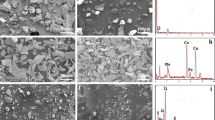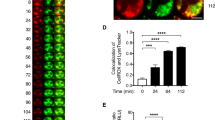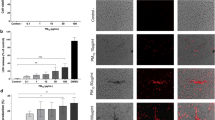Abstract
WE have recently shown that histamine bound to red cells forms ‘rosettes’ with various guinea pig leukocytes and that these ‘histamine receptors’ are particularly well expressed on the alveolar macrophage1. As the lung is a major site of histamine storage and high concentrations of histamine are present in the sputum in certain respiratory diseases such as chronic bronchitis and asthma2,3, we have performed experiments to determine whether free histamine, or histamine bound to particles, interacts with its membrane receptor to initiate the respiratory burst in alveolar macrophages. Activation of the respiratory burst in phagocytic cells is achieved by a number of agents, both soluble and particulate, many of which bind to the plasma membrane (for example, particles opsonised with complement4) through cell surface receptors. This suggests that there may be a close association between ‘membrane recognition’ of certain exogenous stimuli and the enzyme which initiates the primary oxygen-consuming reaction (also thought to be membrane bound and probably ‘NADPH oxidase’5). In the experiments reported here Superoxide anion formation (O−2) and chemiluminescence have been measured as these are recognised features of the respiratory burst of phagocytic cells5.
This is a preview of subscription content, access via your institution
Access options
Subscribe to this journal
Receive 51 print issues and online access
$199.00 per year
only $3.90 per issue
Buy this article
- Purchase on Springer Link
- Instant access to full article PDF
Prices may be subject to local taxes which are calculated during checkout
Similar content being viewed by others
References
Diaz, P., Jones, D. G. & Kay, A. B. Clin. exp. Immun. (in the press).
Turnbull, L. S., Turnbull, L. W., Leitch, A. G., Crofton, J. W. & Kay, A. B. Lancet ii, 526–529 (1977).
Turnbull, L. W., Turnbull, L. S., Crofton, J. W. & Kay, A. B. Lancet ii, 184–186 (1978).
Goldstein, I. M., Roos, D., Kaplan, H. B. & Weissman, G. J. clin. Invest. 56, 1155–1163 (1975).
Babior, B. M., J. Med. 298, 659–668 (1978).
Weinstein, Y., Melmon, K. L., Bourne, H. R. & Sela, M. J. clin. Invest. 52, 1349–1361 (1973).
Lowrie, D. B. & Aber, V. R. Life Sci. 21, 1575–1584 (1977).
Parrott, J.-L., Urquia, D.-A. & Laborde, C. C. r. hebd. Séane. Soc. Biol. 146, 1052–1053 (1952).
Weening, R. S., Wever, R. & Roos, D. J. Lab. clin. Med. 85, 245–252 (1975).
Kedar, E. & Bonavida, B. J. Immun. 113, 1544–1552 (1974).
Hatch, G. E., Gardner, D. E. & Menzel, D. B. J. exp. Med. 147, 182–195 (1978).
Henderson, W. R. & Kaliner, M. J clin. Invest. 61, 187–196 (1978).
Author information
Authors and Affiliations
Rights and permissions
About this article
Cite this article
DIAZ, P., JONES, D. & KAY, A. Histamine-coated particles generate Superoxide (O−2) and chemiluminescence in alveolar macrophages. Nature 278, 454–456 (1979). https://doi.org/10.1038/278454a0
Received:
Accepted:
Issue Date:
DOI: https://doi.org/10.1038/278454a0
This article is cited by
-
Histamine inhibits activation of human neutrophils and HL-60 leukemic cells via H2-receptors
Naunyn-Schmiedebergs Archives of Pharmacology (1989)
-
Histamine H2 receptor activity and histamine metabolism in human U-937 monocyte-like cells and human peripheral monocytes
Agents and Actions (1986)
-
Pharmacological characterization of the histamine uptake system in HL-60 human promyelocytic leukemia cells
Bioscience Reports (1986)
Comments
By submitting a comment you agree to abide by our Terms and Community Guidelines. If you find something abusive or that does not comply with our terms or guidelines please flag it as inappropriate.



